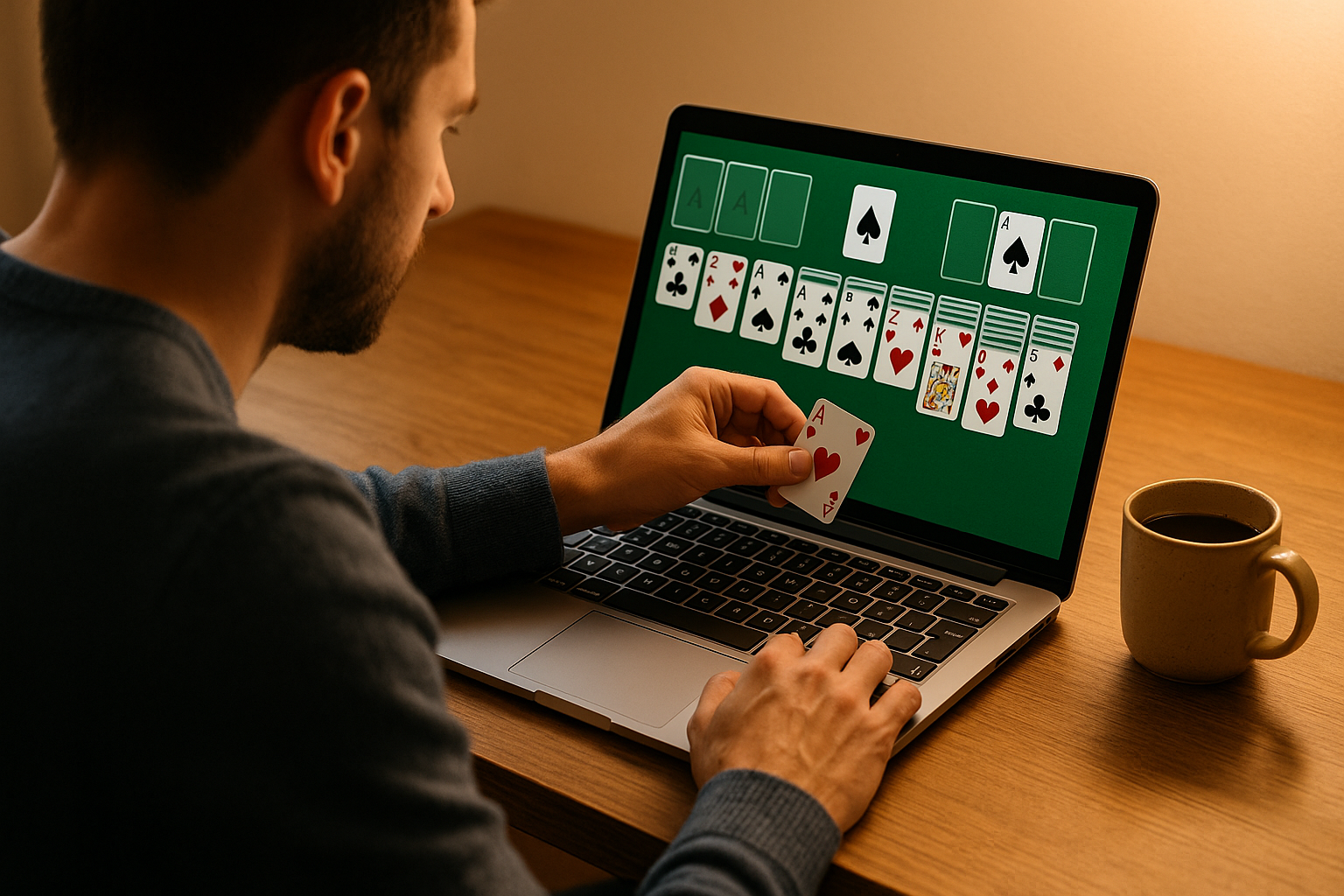Google Solitaire: How to Turn a Search Box Distraction into a Skill Builder
It’s the quietest kind of break: you type “solitaire” into a search bar, a familiar tableau appears, and a couple of quick moves melt the stress away. Then a question lands—was that winnable faster, or did I waste time on a pretty move?
If you enjoy the solitaire google game for its instant, no‑friction start, here’s how to make it sharper and more satisfying: a decision‑first approach, a 5‑minute micro drill, and a lightweight stat sheet you can keep on your desk. When you’re ready to practice on a smooth, Google‑style board, try google solitaire free.
What Makes “Google Solitaire” Fun (and deceptively tough)
-
Instant start: no menus, no setup—perfect for short, focused sessions.
-
Classic flow: the familiar Klondike rhythm rewards pattern reading and calm speed.
-
Two tempos in one game: quick reveals early, careful sequencing late.
Ask yourself:
-
Do you open empty columns deliberately—or drop the first King you see?
-
When ties exist, do you prefer reveals that flip new information?
-
Are you cycling the deck with intent, or flipping on autopilot?
-
Do you know your own average clear time over the last 10 games?
Decision‑First Strategy (small rules, big payoff)
-
Reveals beat re‑stacks. If two moves are equal, choose the one that flips a facedown card or opens lines.
-
Don’t auto‑fill empties. Test King candidates—one may unlock a longer chain after compression.
-
Delay low‑impact foundations. Moving a low card up too early can choke a needed tableau chain.
-
Shape the stock. Pause a non‑critical move to keep a useful card on top of the waste for the next cycle.
Quick table: habits to upgrade
| Common habit | Upgrade it to… | Why it helps |
|---|---|---|
| Snapping the first legal move | Tie‑break with “reveal > open column > re‑stack” | More options per minute |
| Filling the first empty with any King | Compare two Kings via quick test/undo | Better cascades |
| Auto‑sending low cards to foundations | Hold until it increases mobility | Avoids dead ends |
| Speed‑flipping the deck | Track top waste card between cycles | Cleaner sequencing |
5‑Minute Micro Drill: “Fast but Clean”
Goal: reduce hesitation on high‑value choices while keeping accuracy.
Setup (60 sec): Start a fresh game; set a 4‑minute timer. Keep a small note: Grow / Hold / Shrink.
Run (3 min):
-
Before each move, label it in your head:
-
Grow = creates a new match or flips a card.
-
Hold = neutral, keeps options alive.
-
Shrink = kills a likely future line (use sparingly).
-
-
Prefer Grow; take Shrink only if it triggers an immediate follow‑up.
Review (1 min):
-
Count Grow/Hold/Shrink.
-
Note any Shrink that backfired within two moves.
-
Write one micro‑rule for the next session (e.g., “Scan three piles left before any 1‑step move.”)
Repeat across 5–8 quick games; your recognition speed compounds.
Simple “Google‑Style” Sabermetrics (track what you control)
-
Clear Time (CT): minutes per win; track a 7‑game moving average.
-
Reveals/Game (RG): quick proxy for information gain.
-
Empty‑Column Timing (ECT): turns before first empty column; earlier usually correlates with better clears.
-
Shrink Rate (SR): Shrinks ÷ total moves; aim to lower over time.
-
Chain Max (CM): longest cascade in a game.
Sample tracking sheet (format only—replace with yours):
| Session | Games | CT (avg) | RG (avg) | ECT (avg) | SR % | CM (avg) |
|---|---|---|---|---|---|---|
| Week A | 10 | 3:42 | 10.1 | 9 | 31 | 6.0 |
| Week B | 12 | 3:18 | 11.0 | 8 | 26 | 6.6 |
| Week C | 12 | 3:05 | 11.4 | 7 | 23 | 7.1 |
How to read it: as ECT drops and SR falls, CT trends down—cleaner sequences, faster wins.
A Fresh Perspective: Treat Your Search‑Game Like a Sprint
Think sabermetrics for a search widget. You’re not grinding hours—you’re running short, honest sprints that turn “quick break” clicks into measurable skill. Two 5‑minute sessions a day are enough to nudge your Clear Time down week over week. The win isn’t the flashy final cascade; it’s the feeling that your decisions got obviously smarter.
Summary & CTA
The solitaire google game shines because it’s frictionless. Add a decision‑first lens, a 5‑minute drill, and a few simple stats, and it becomes a compact skill builder.
When you want the same instant feel on a fast, clean board, practice here: google solitaire free. Run the drill, log ten games, and ask yourself next week: which single micro‑rule shaved the most seconds off my average?
